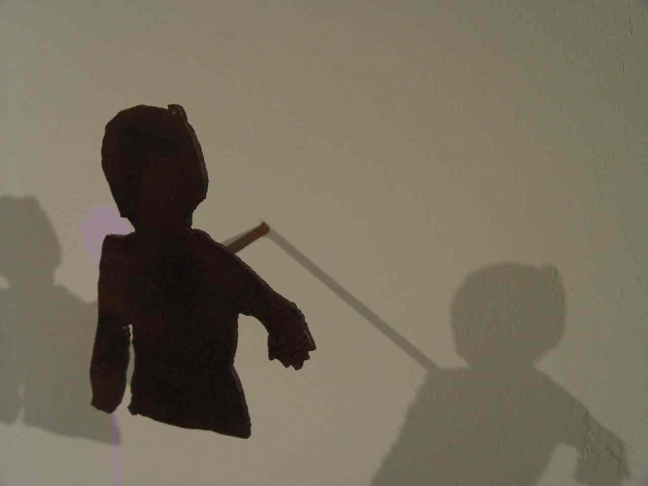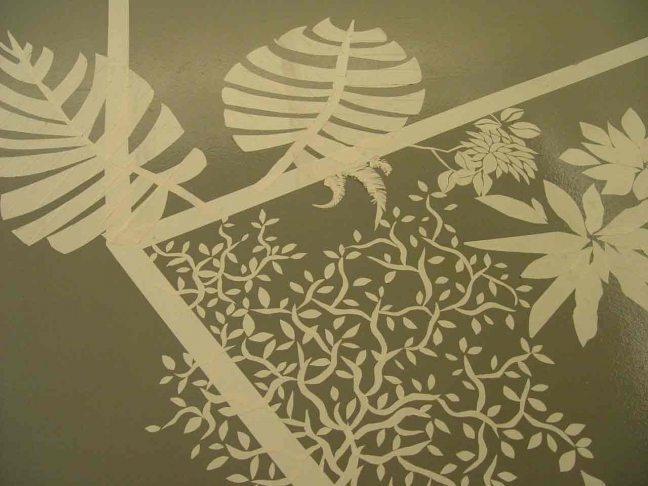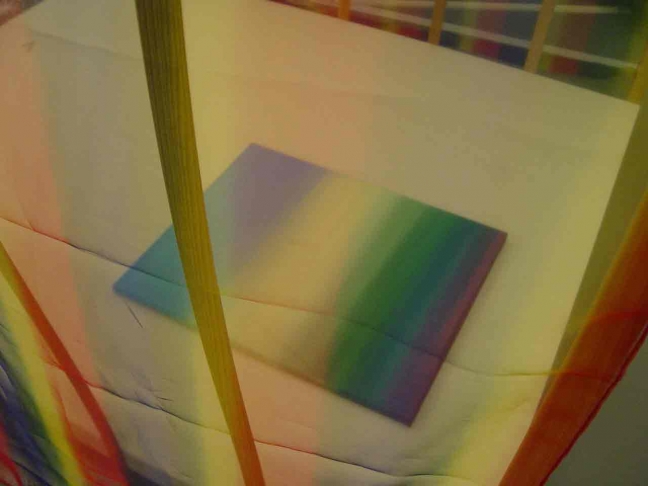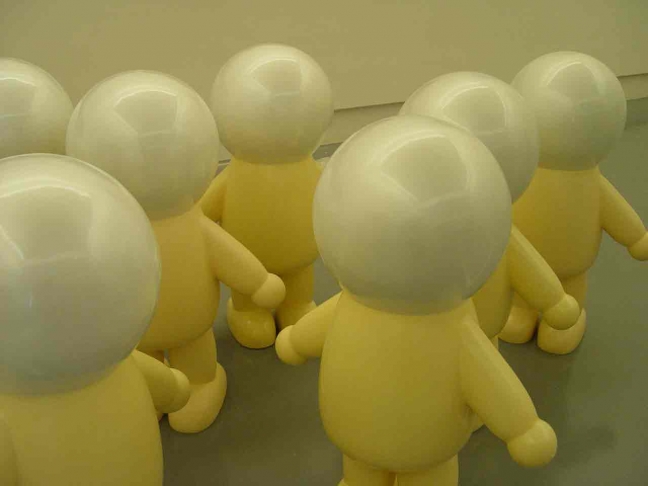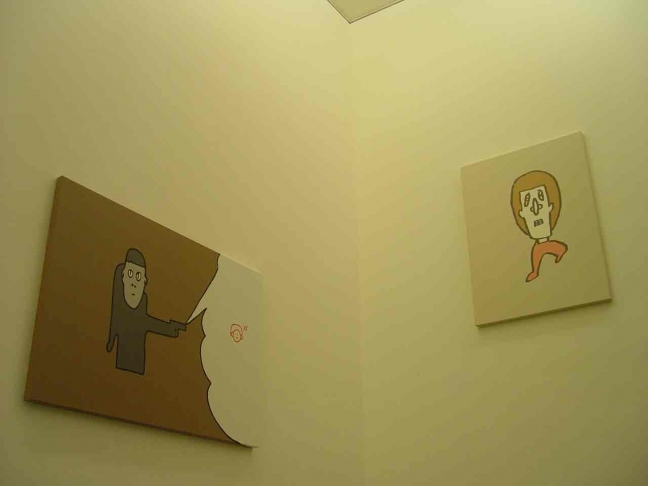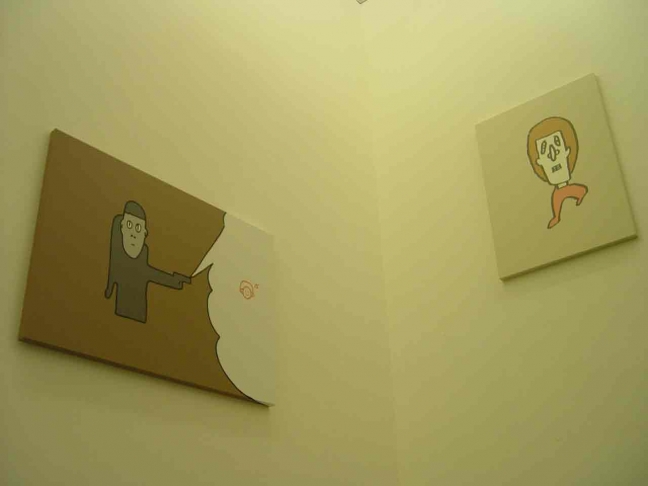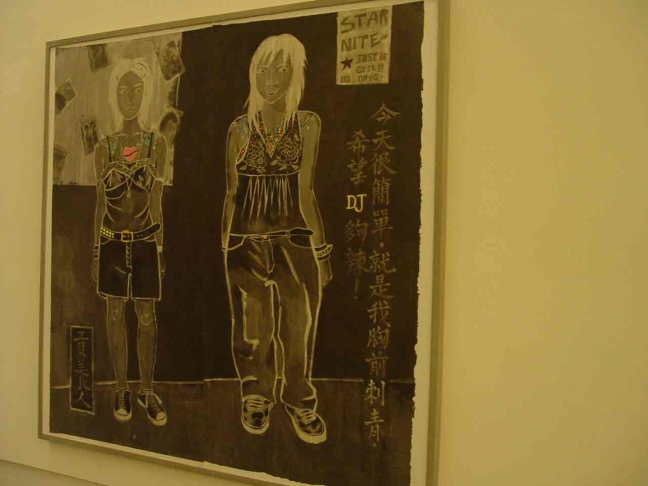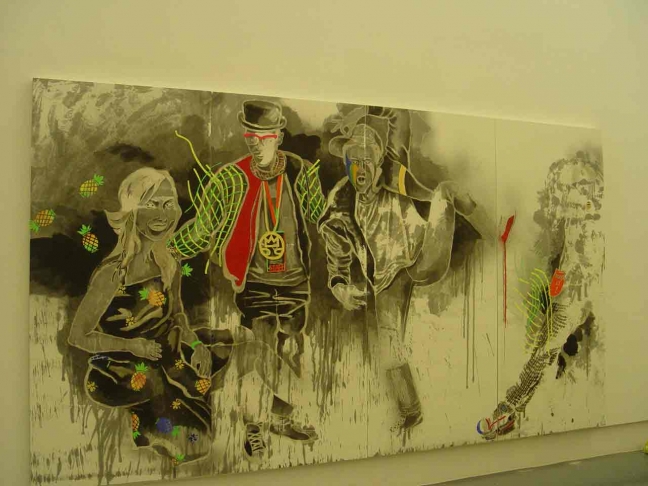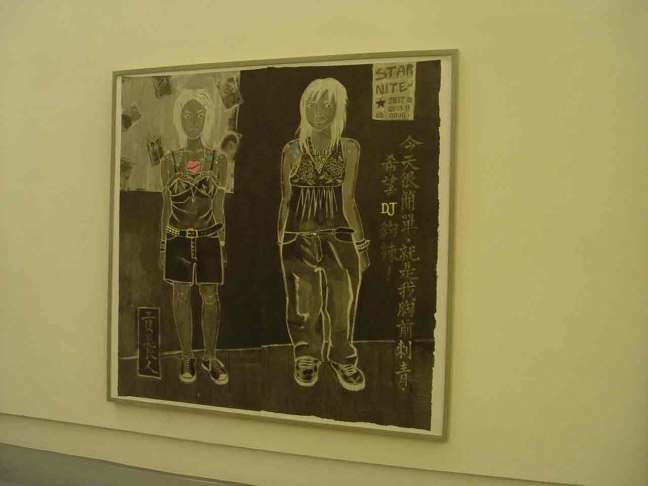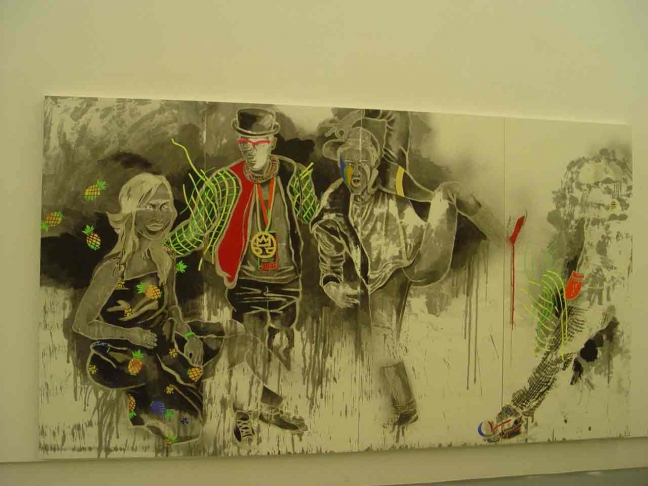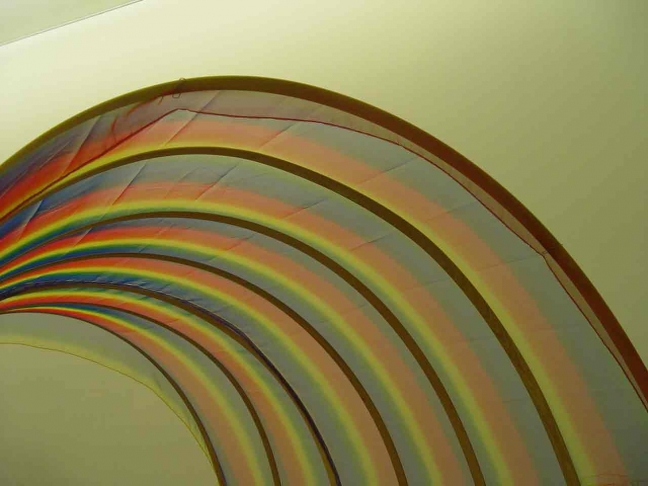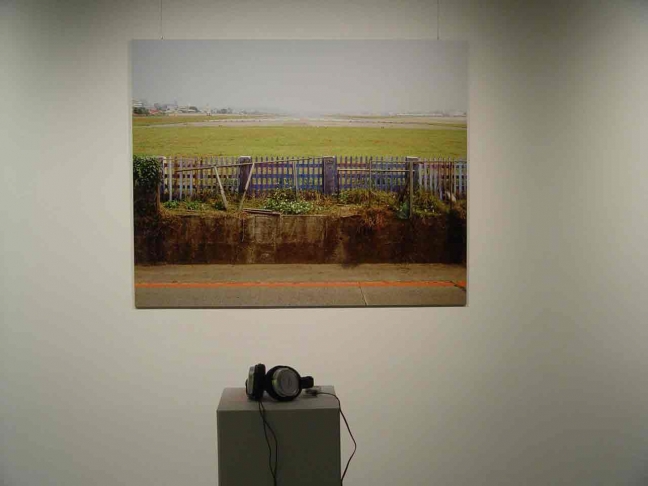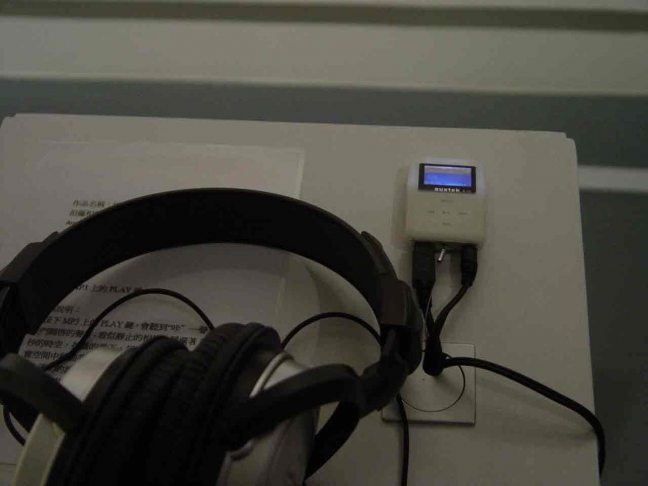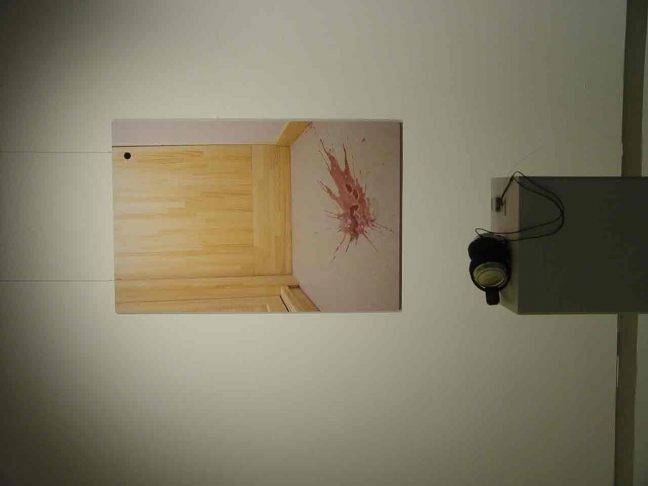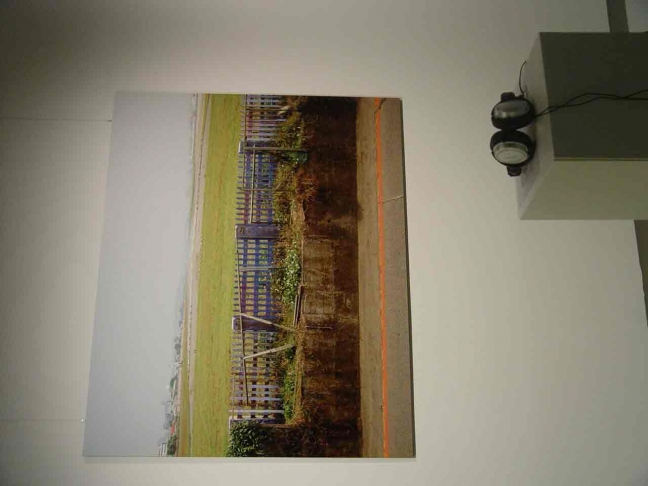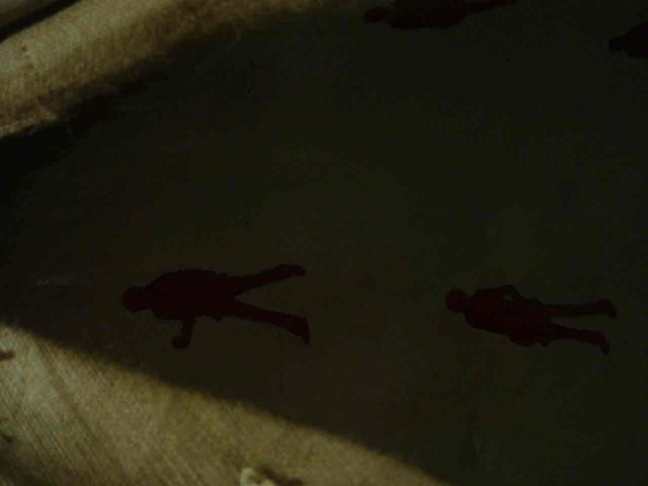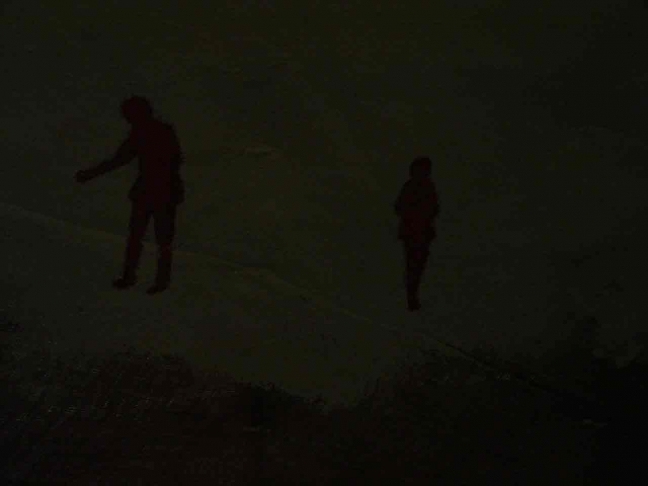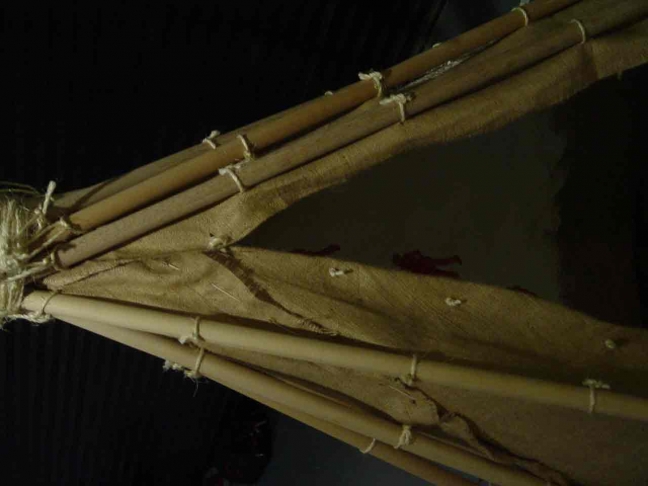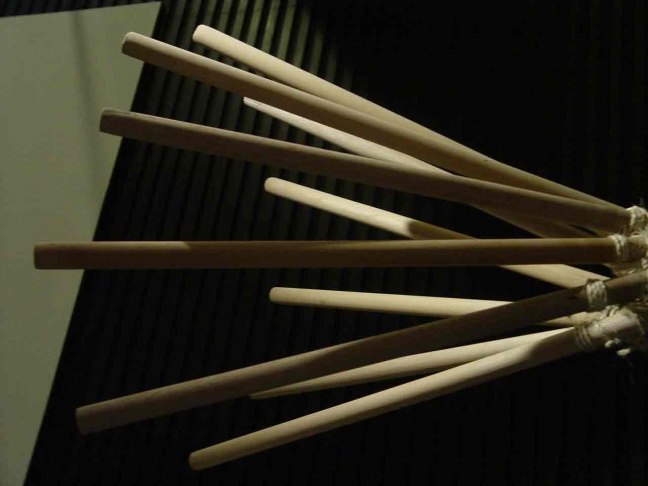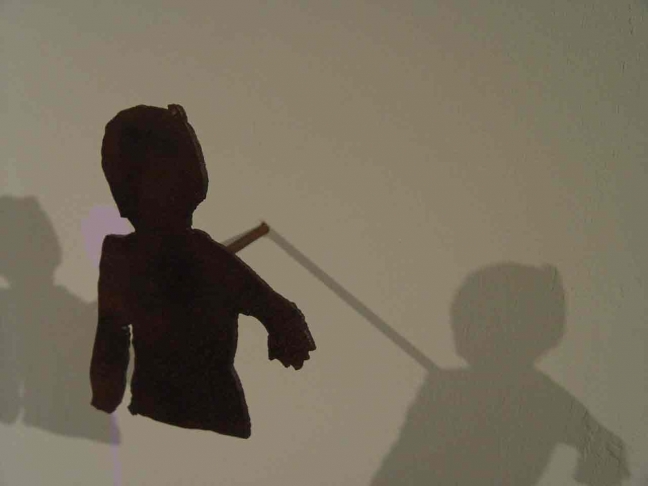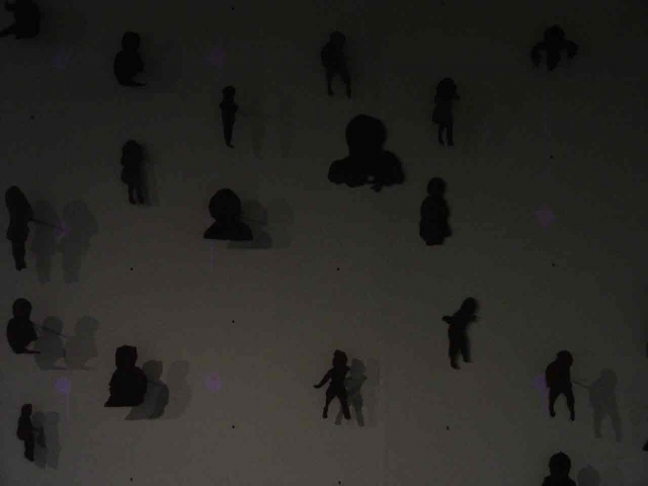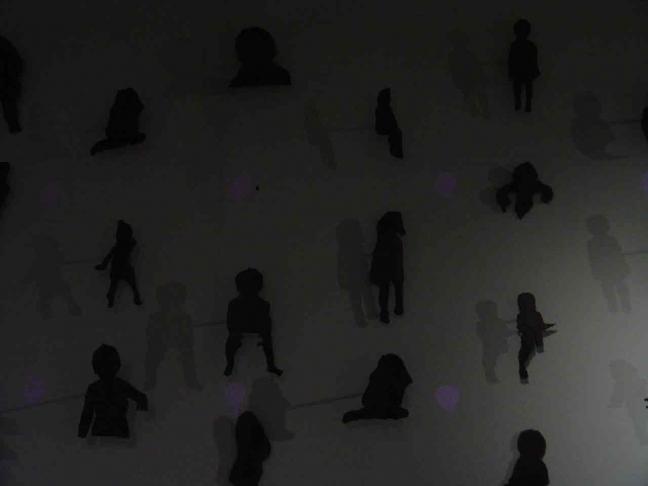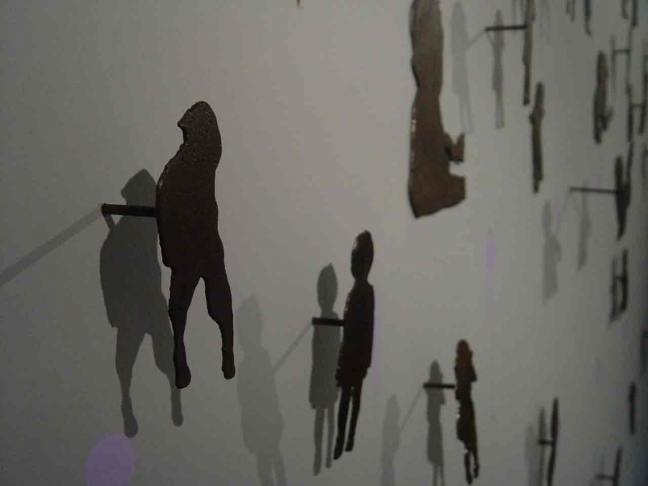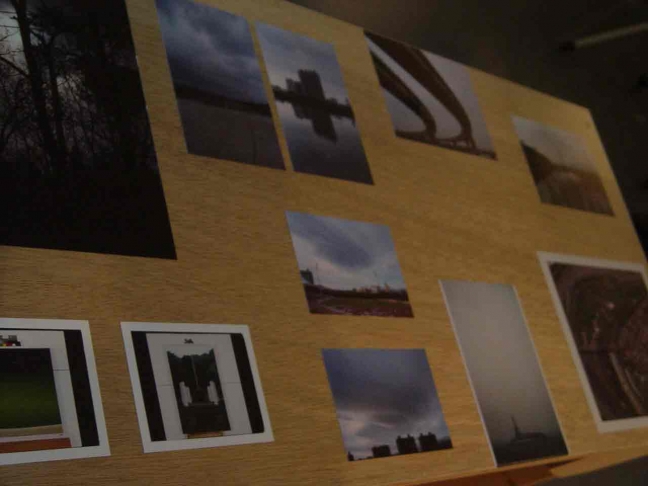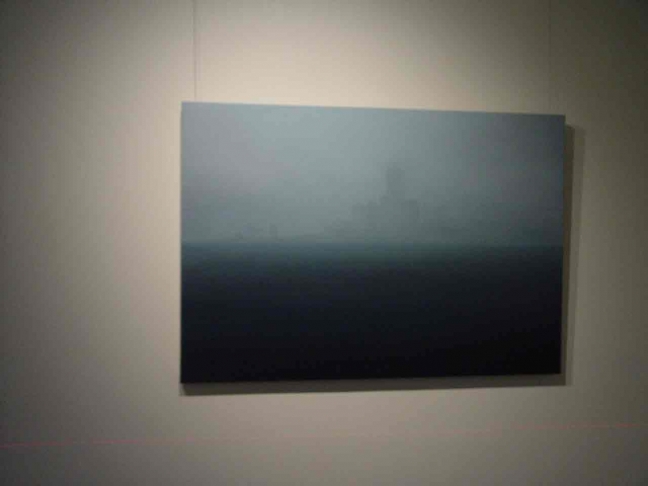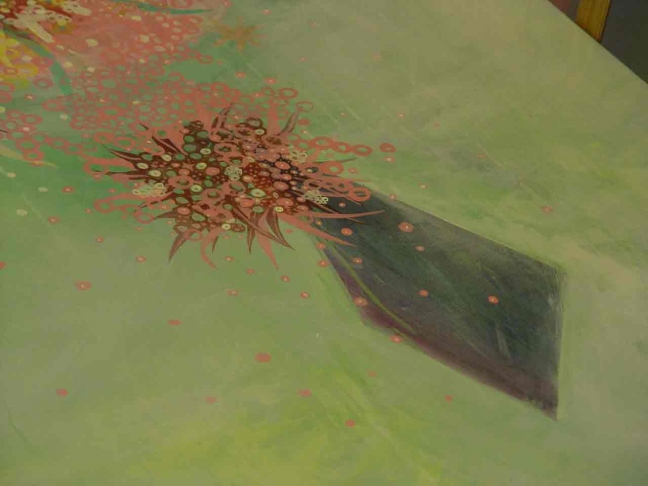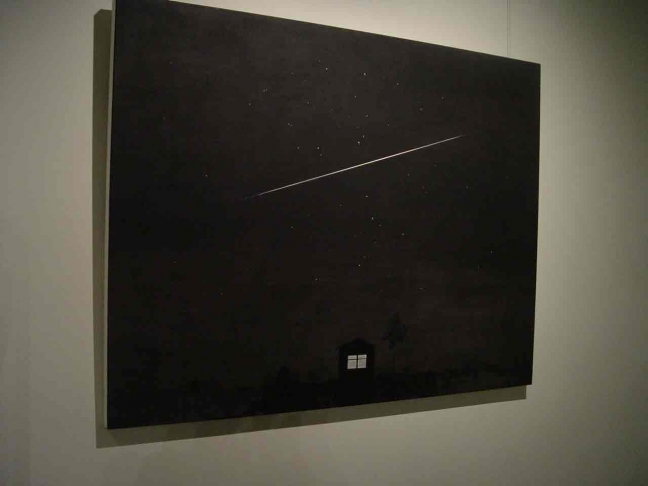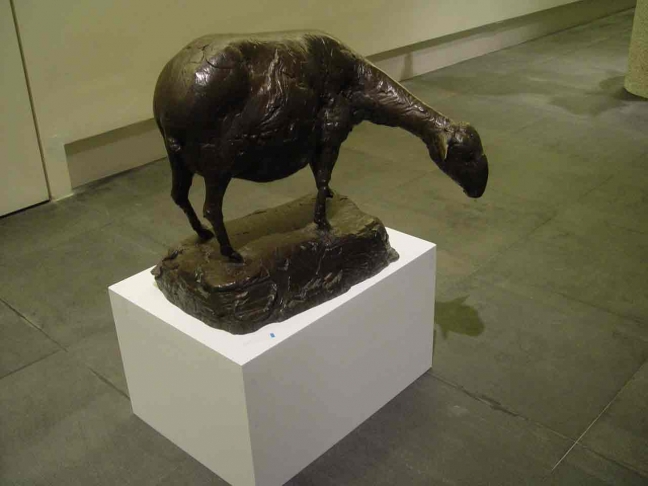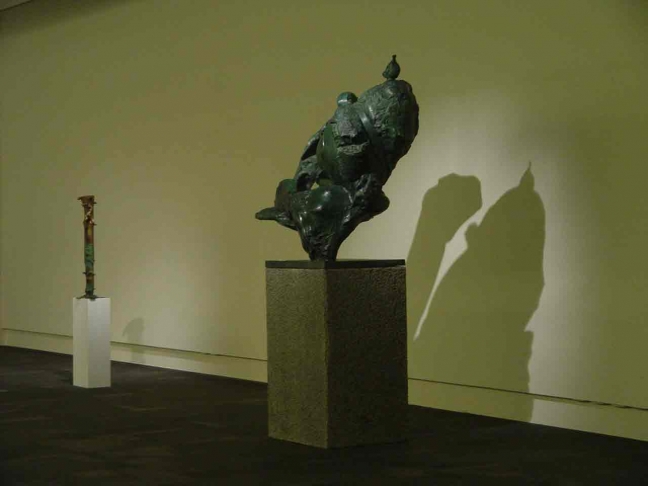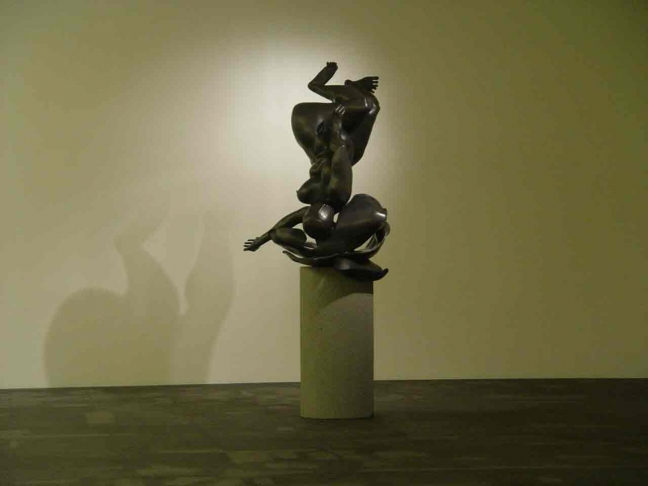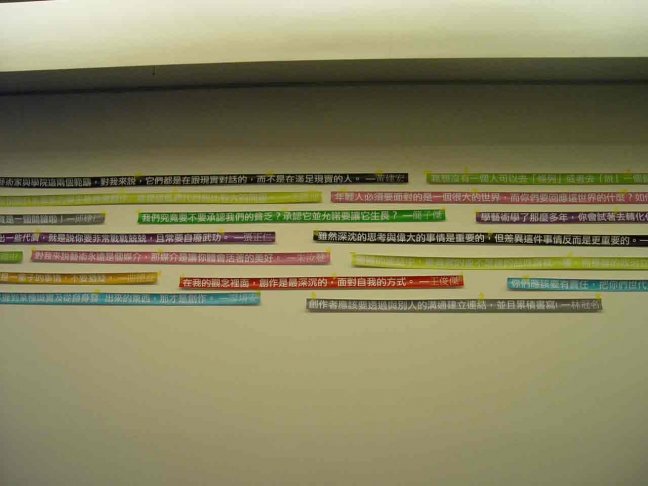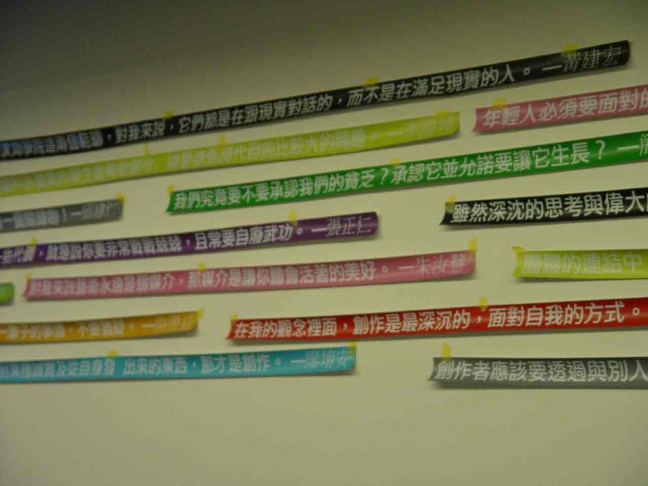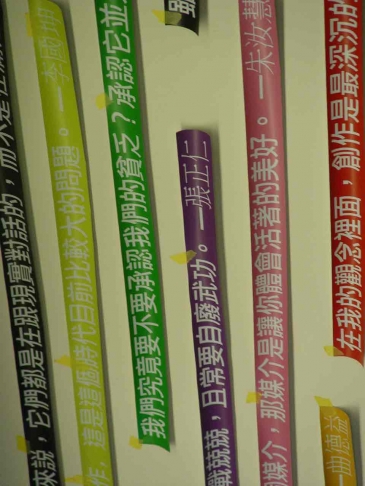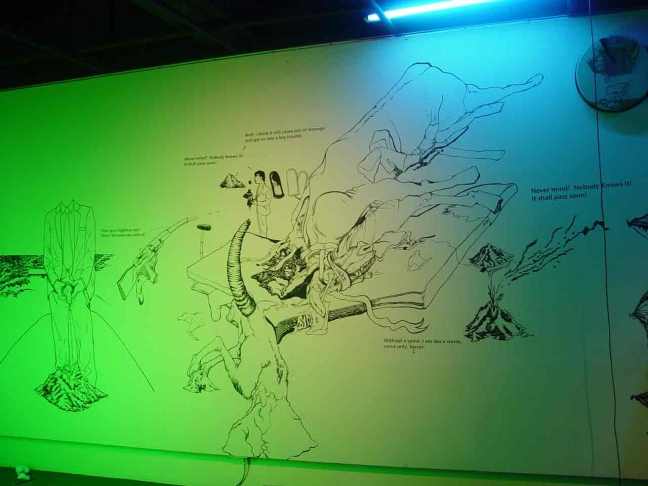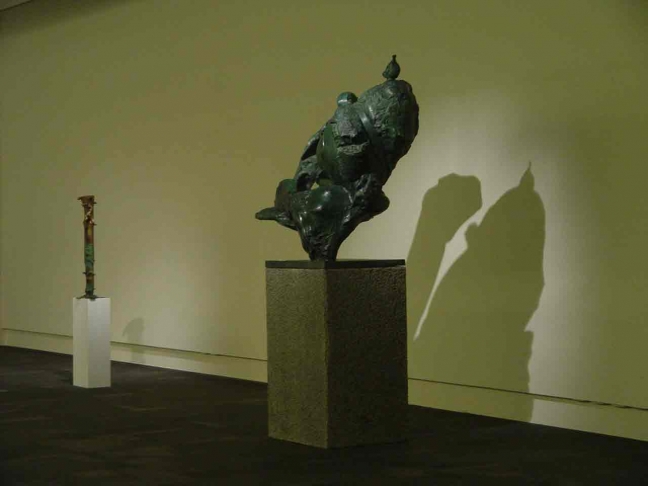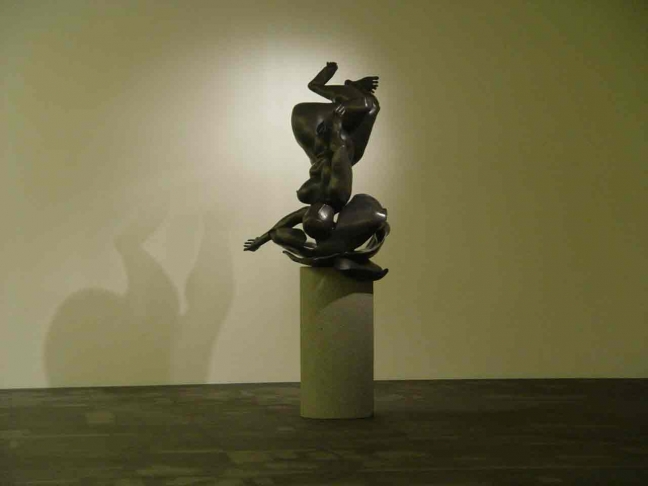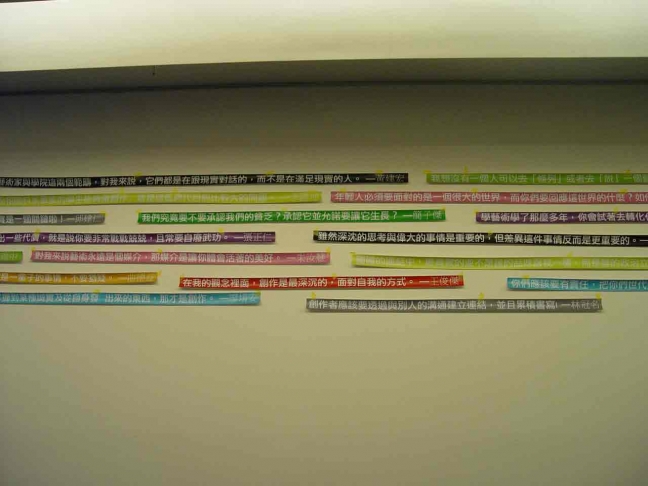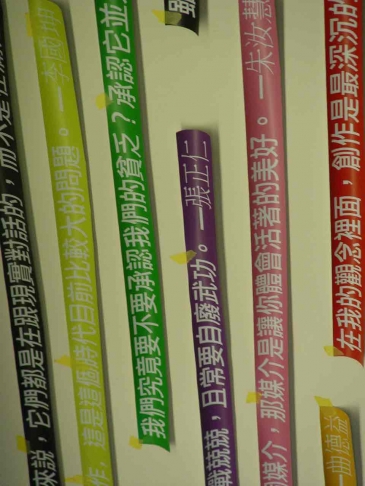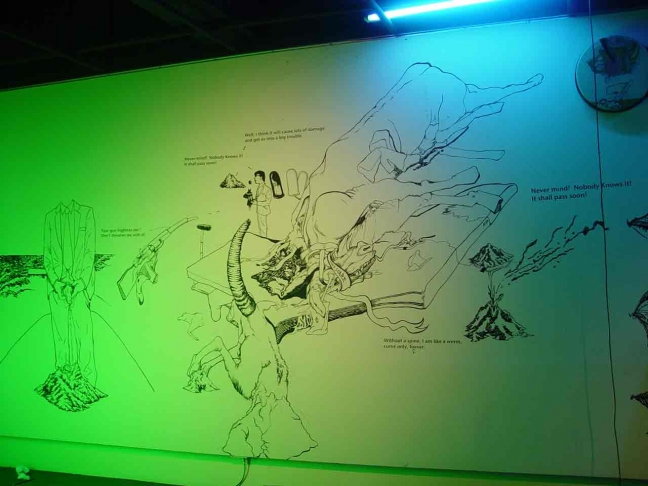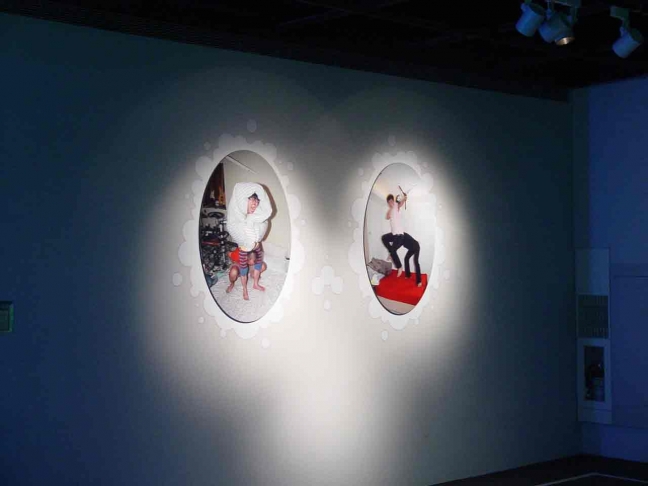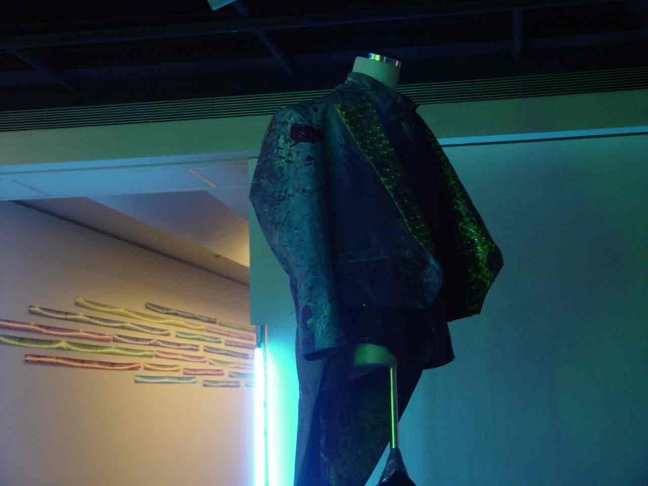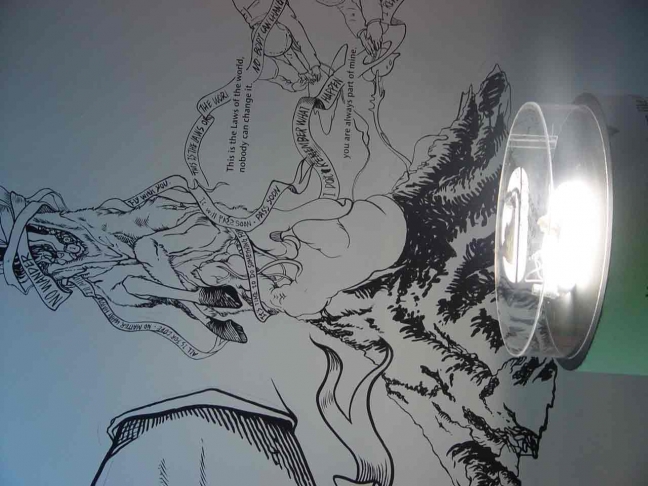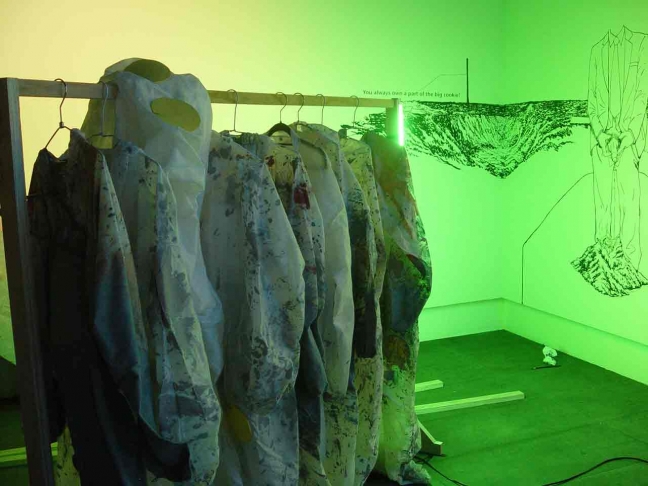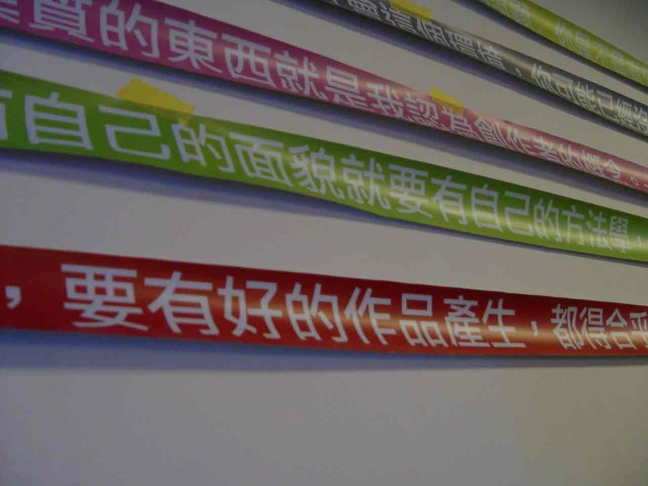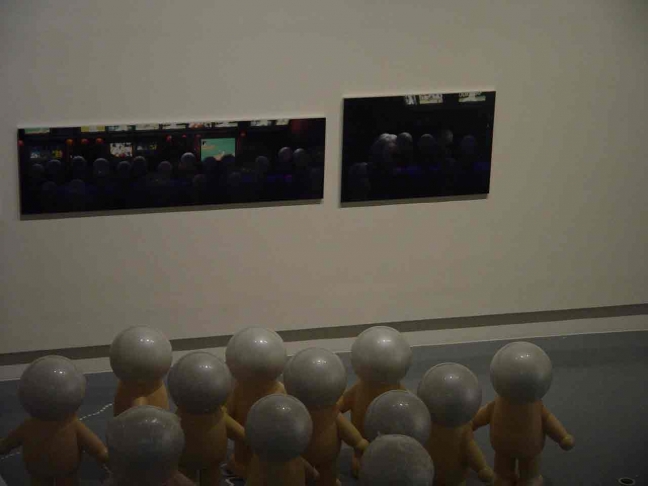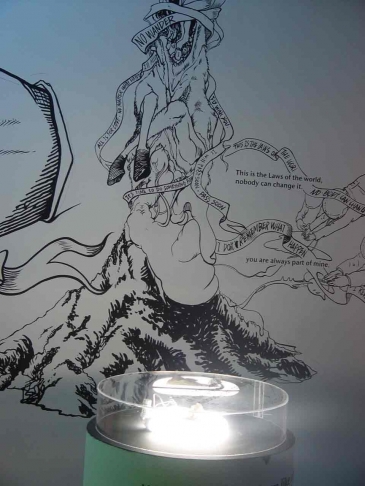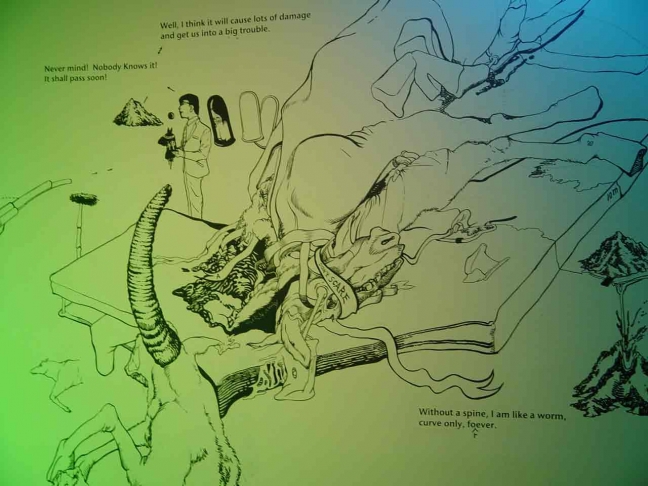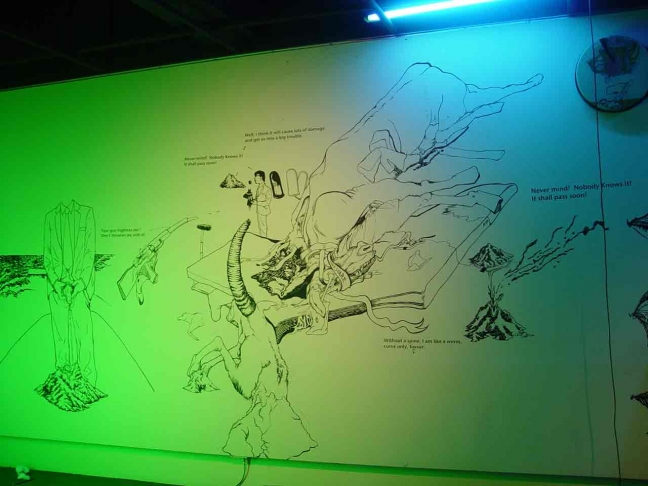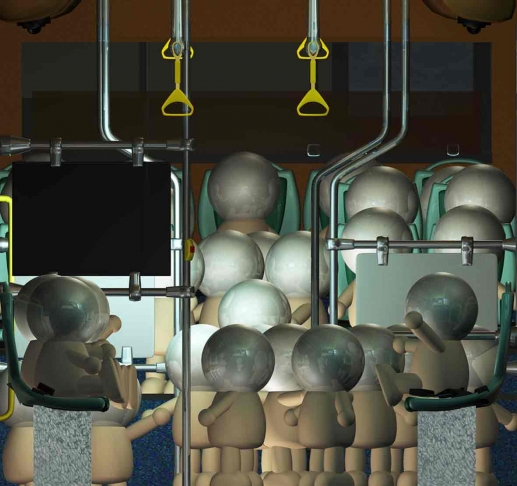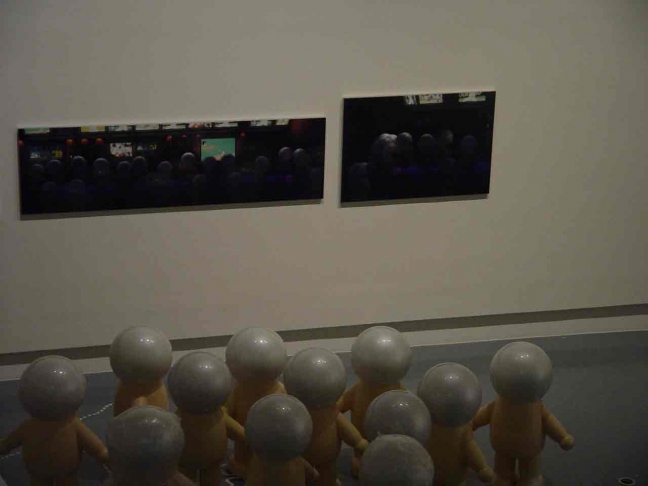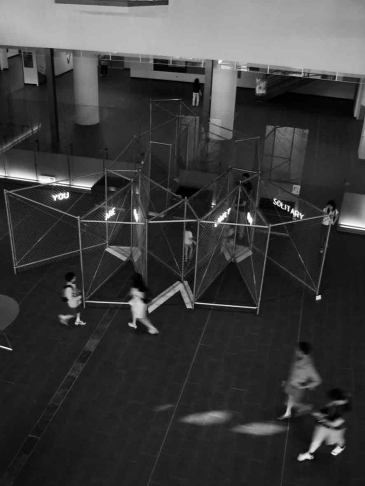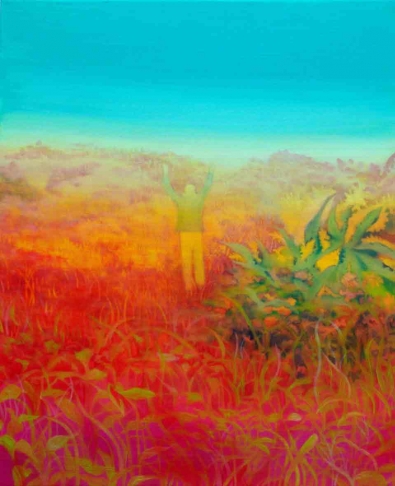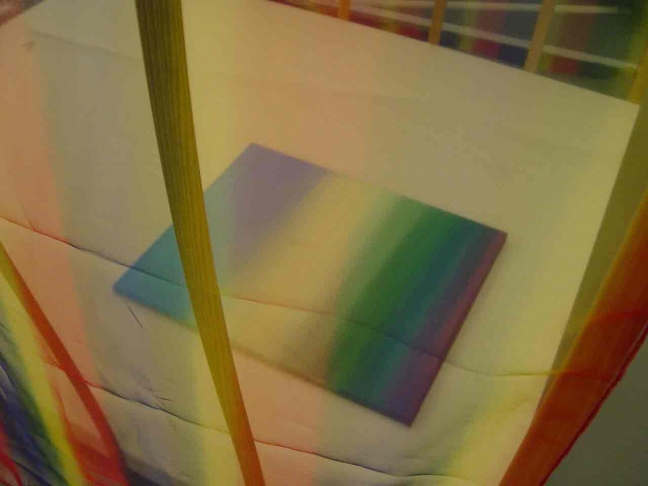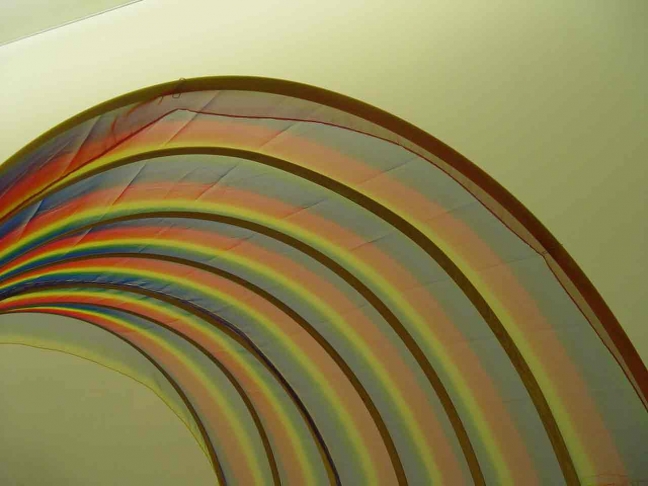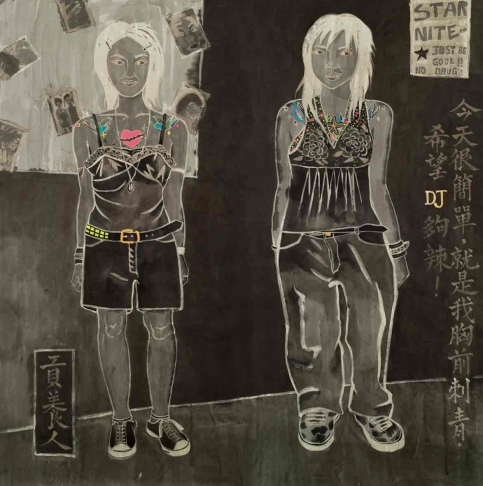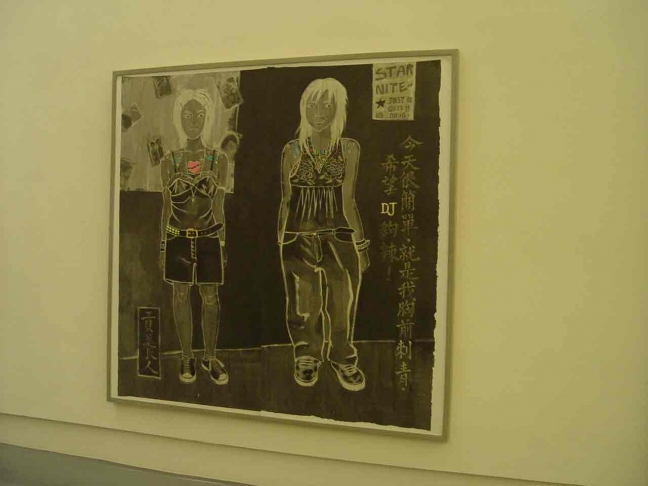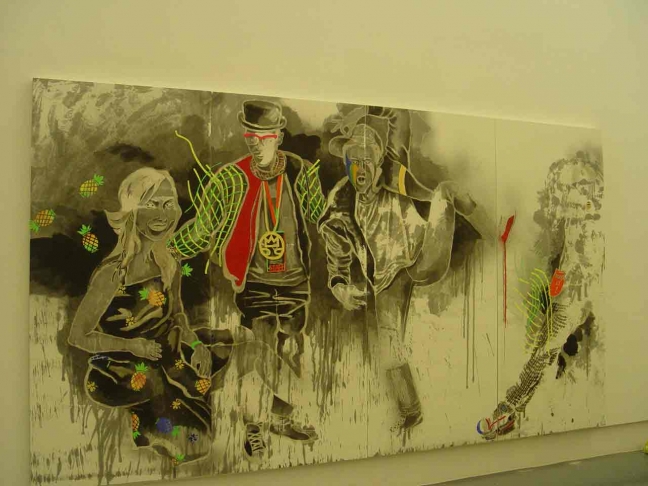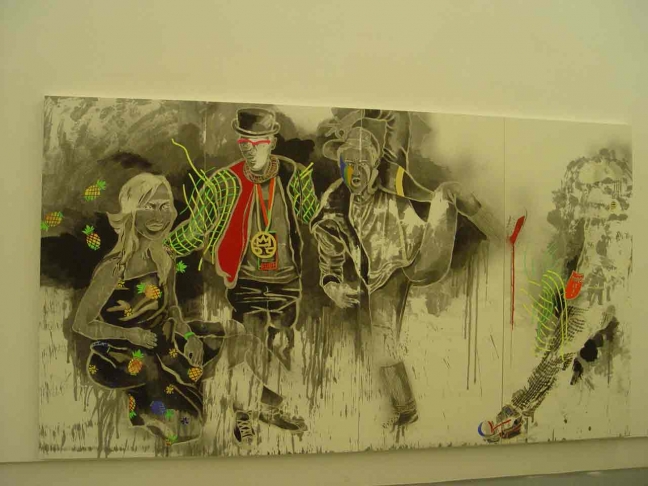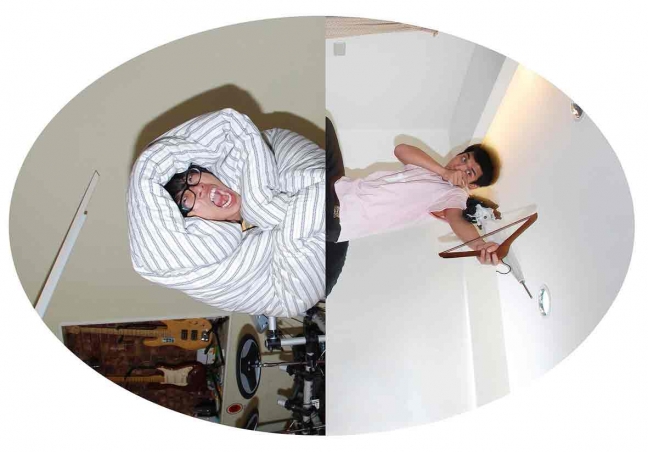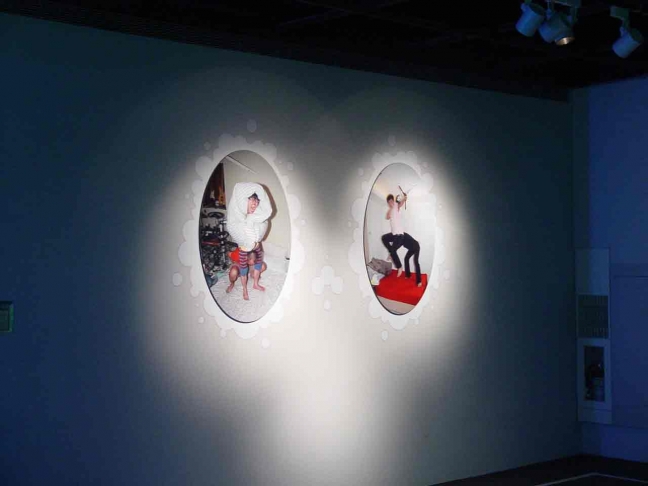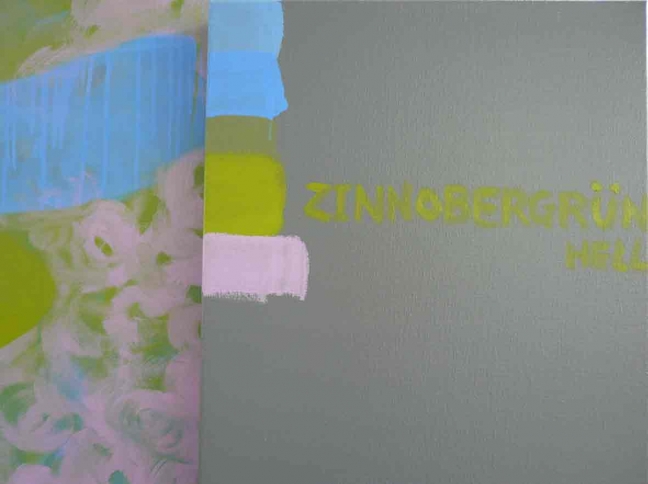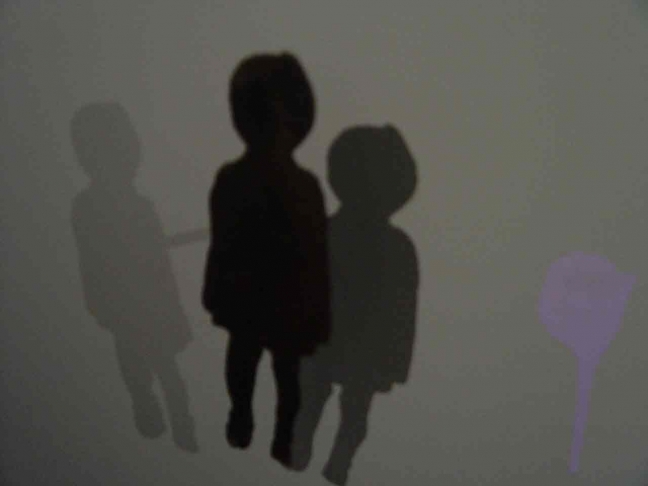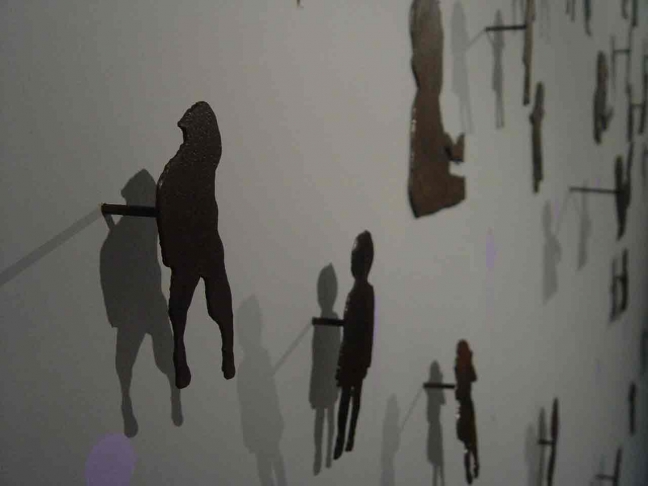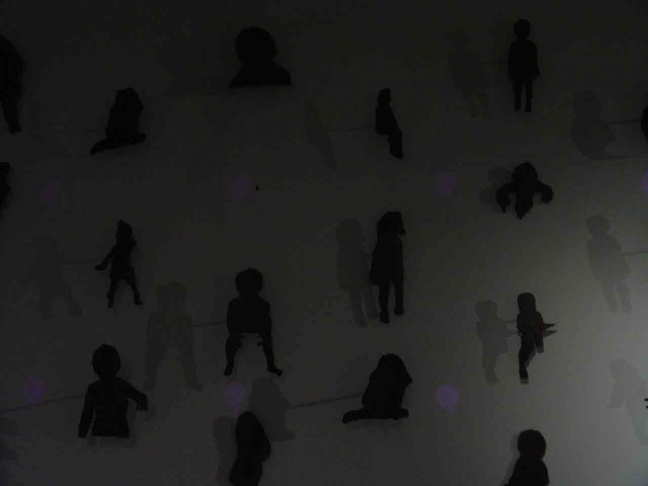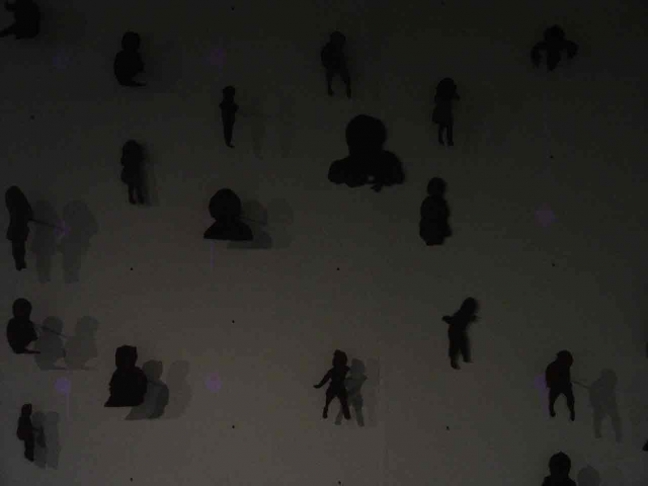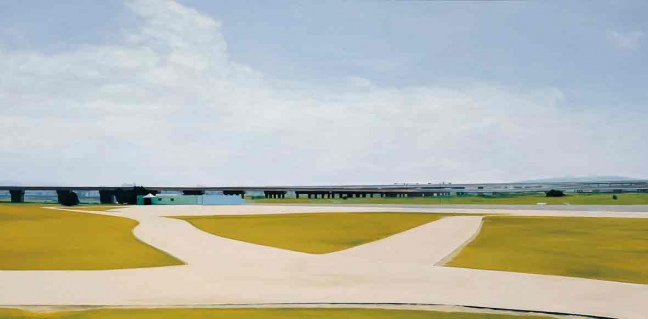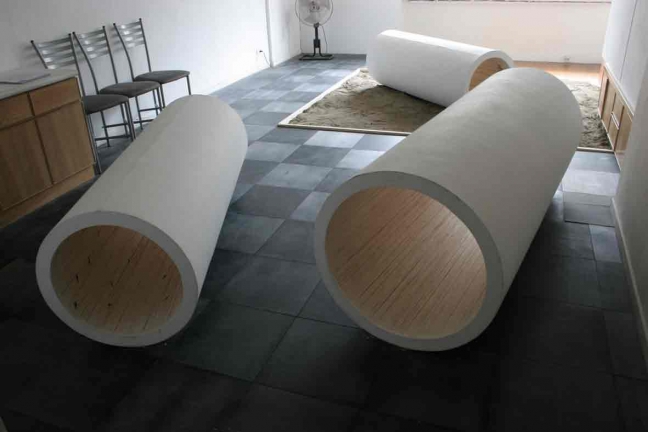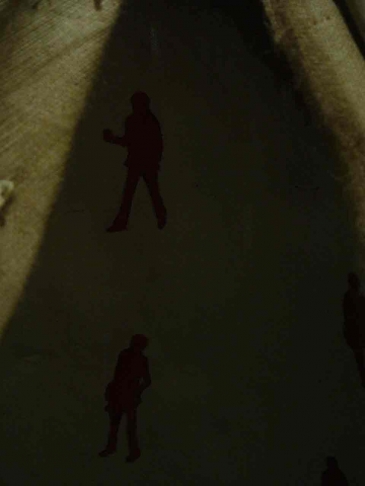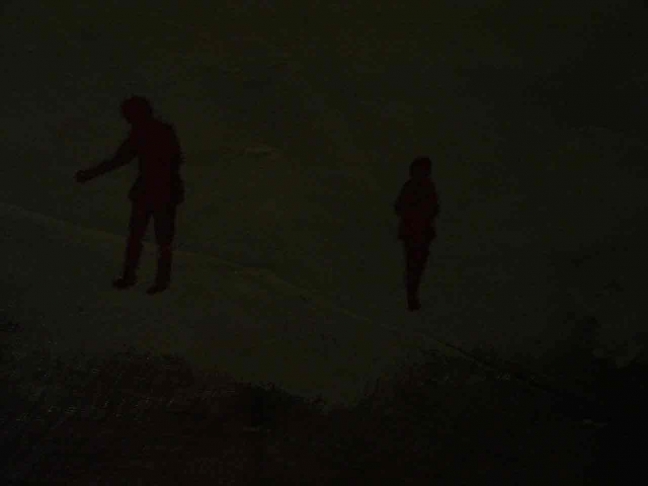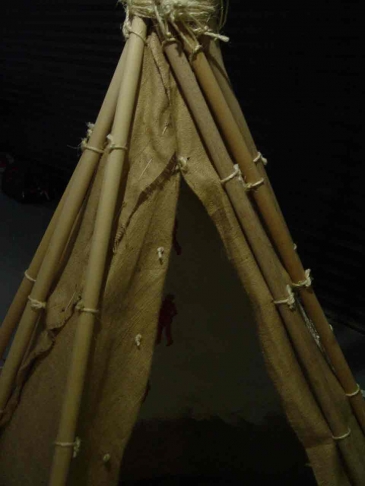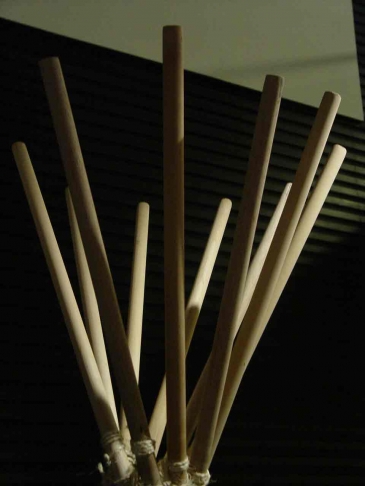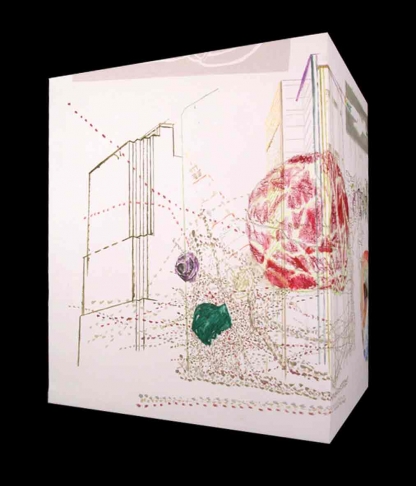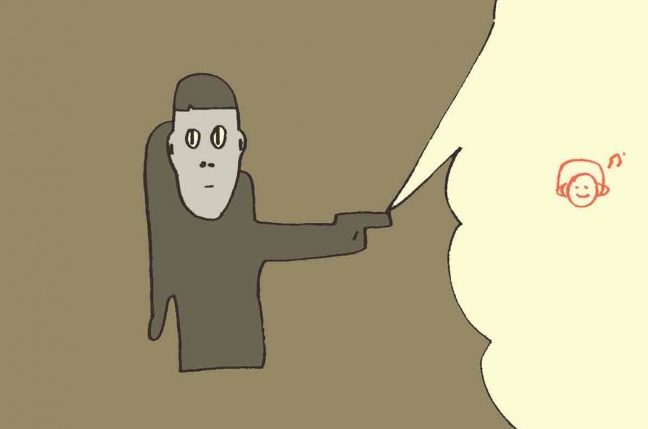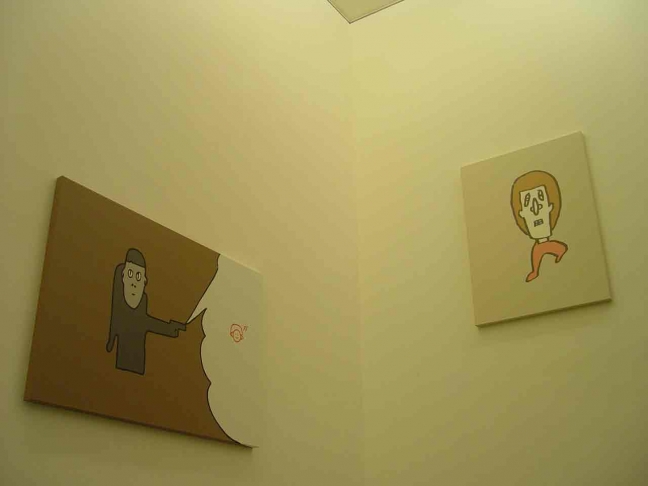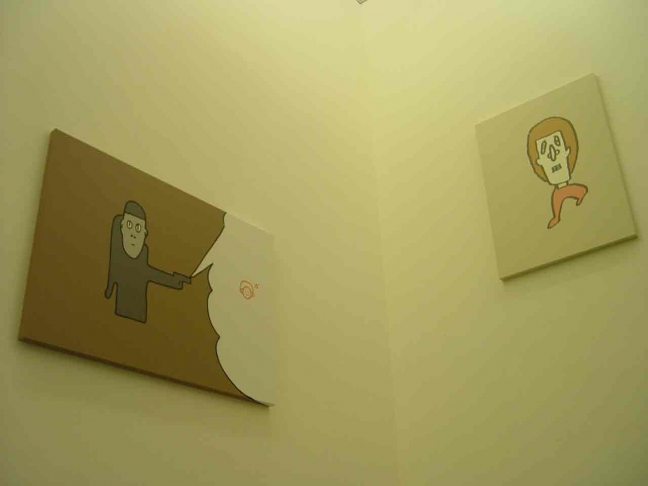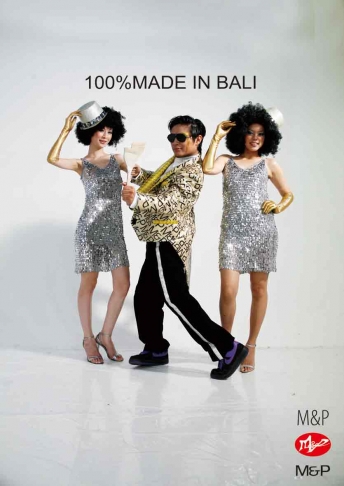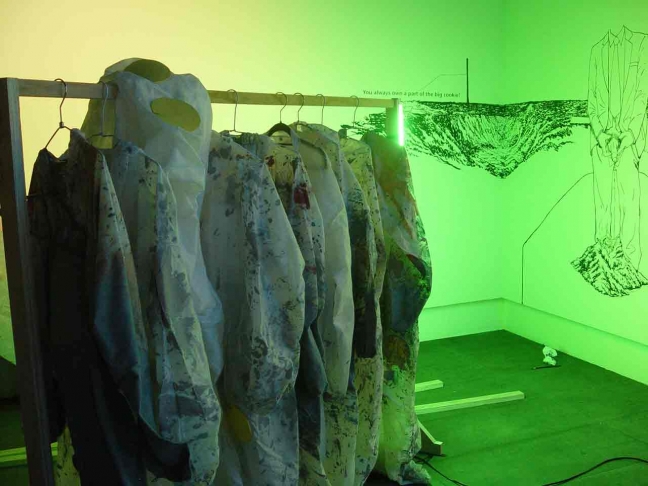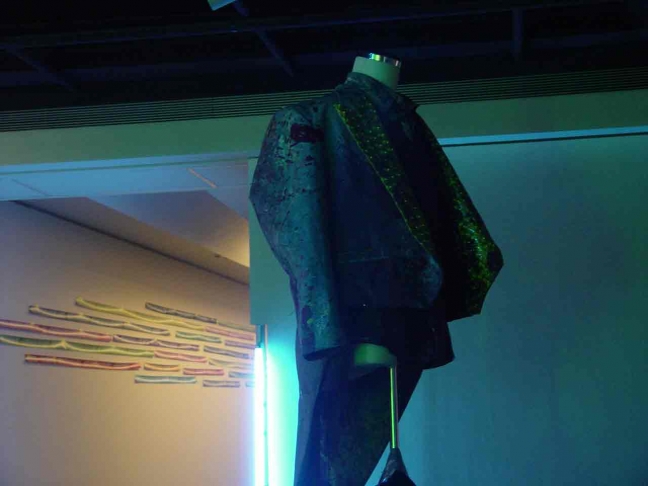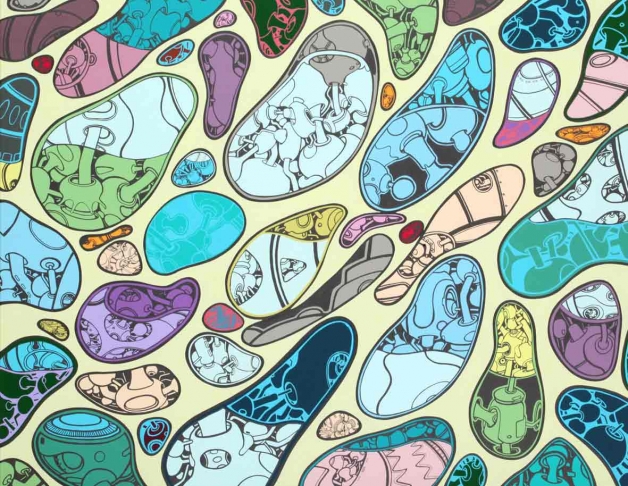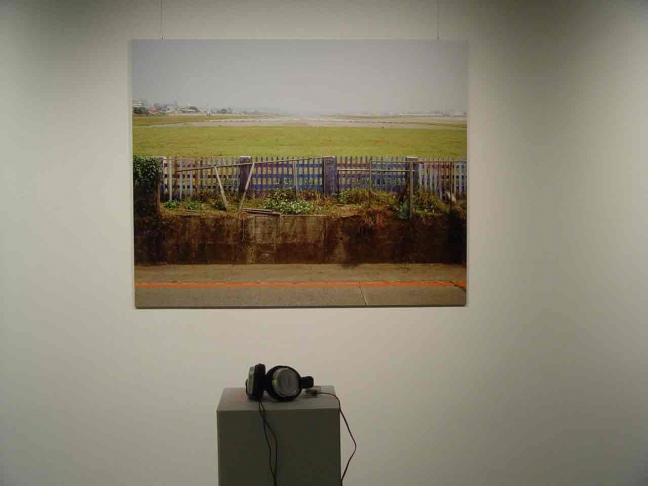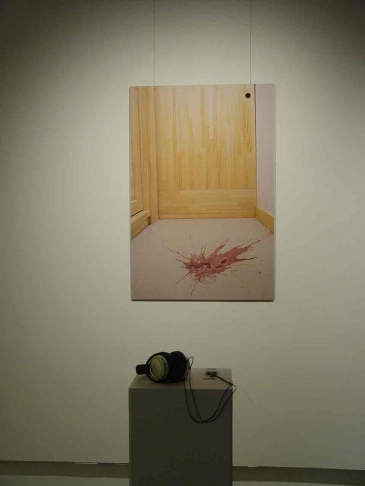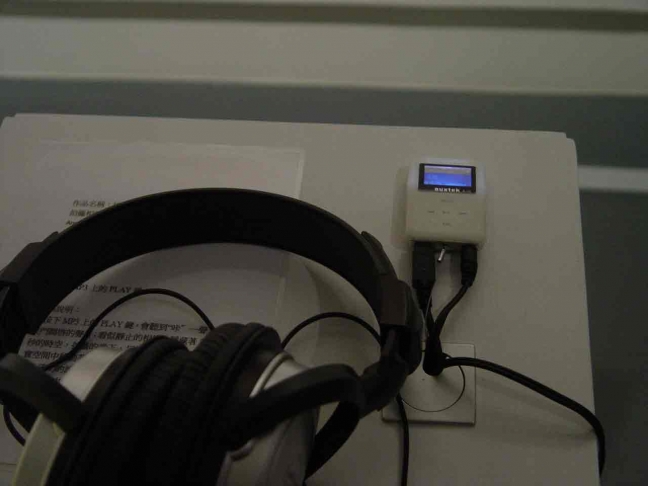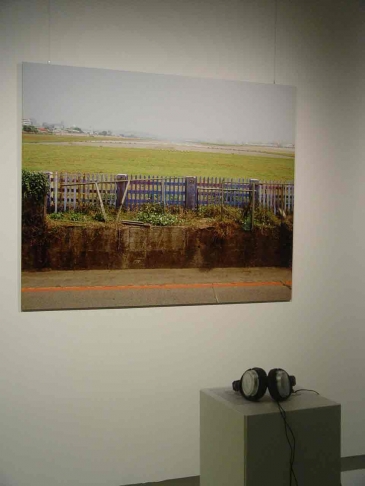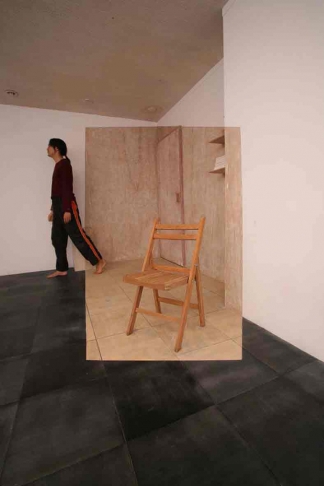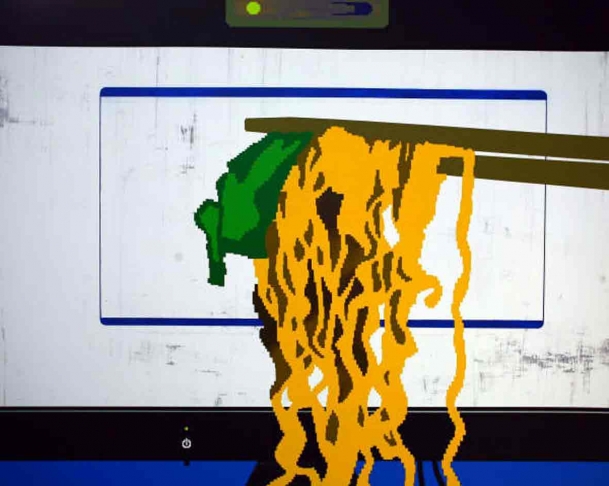About The Orientation of 21 Century Artists
2009.04.10~2009.05.17
09:00 - 17:00
A Gift from Us to the Art Community Each beginning brings an expectation. Everything is just like a blank book when it gets starting, which waited for someone to fill with something. Meanwhile, right at the beginning of the century, it always makes people look forward. Whatever today it is, we see the future. We look forward something to do by the position we have, which are significantly related to the role playing in this society. Artists are recognized by their own works. But we can not help to ask ourselves what else can be discussed apart from the artworks and the mutual similarities in the exhibition. It is just as the initial idea we had tried to bring out for this exhibition and somehow is indescribable to us. We do not merely attempt to show works, but to see how to focus at the beginning of this century by our art community. Hence we changed our roles to a journalist. We have interviewed with the members of art community to discuss about the beginning of this century. And then we write on such issue to be collected into a publication. This publication we therefore regarded it as a kind of gift to (return) the art community. Except what has stated above, we have planned another collective project: each artist simulates his/her state of art practice and to express the concept of art work on a small bridge-like table, and we link those tables in a specific space. It is a symbol to simulate the meaning of community, also a metaphor to uncover the relationship of community. Many things have happened there, which is just like the outline of concept or a reveal of coordinate’s situation to a mini-art community. (Text / Sean Wang)
A Gift from Us to the Art Community Each beginning brings an expectation. Everything is just like a blank book when it gets starting, which waited for someone to fill with something. Meanwhile, right at the beginning of the century, it always makes people look forward. Whatever today it is, we see the future. We look forward something to do by the position we have, which are significantly related to the role playing in this society. Artists are recognized by their own works. But we can not help to ask ourselves what else can be discussed apart from the artworks and the mutual similarities in the exhibition. It is just as the initial idea we had tried to bring out for this exhibition and somehow is indescribable to us. We do not merely attempt to show works, but to see how to focus at the beginning of this century by our art community. Hence we changed our roles to a journalist. We have interviewed with the members of art community to discuss about the beginning of this century. And then we write on such issue to be collected into a publication. This publication we therefore regarded it as a kind of gift to (return) the art community. Except what has stated above, we have planned another collective project: each artist simulates his/her state of art practice and to express the concept of art work on a small bridge-like table, and we link those tables in a specific space. It is a symbol to simulate the meaning of community, also a metaphor to uncover the relationship of community. Many things have happened there, which is just like the outline of concept or a reveal of coordinate’s situation to a mini-art community. (Text / Sean Wang)
Central to the series, The Device of Passing Through the Space, is the assemblage of layers of the visually reasonable and unreasonable phenomena. Occasionally, extended lines direct us to boundless fantasies, and other times science is dragged into the representational space. Imagination, fantasy, illusion, logics, science, real space and fictionalized space can all be made to intersect with each other, only if I could guarantee any results with clearly-defined meanings that may come out of such experimentation. The merging process may be relatively straightforward; but even if I made direct linkage between these elements, the result could still open up a broad field for further exploration.
Central to the series, The Device of Passing Through the Space, is the assemblage of layers of the visually reasonable and unreasonable phenomena. Occasionally, extended lines direct us to boundless fantasies, and other times science is dragged into the representational space. Imagination, fantasy, illusion, logics, science, real space and fictionalized space can all be made to intersect with each other, only if I could guarantee any results with clearly-defined meanings that may come out of such experimentation. The merging process may be relatively straightforward; but even if I made direct linkage between these elements, the result could still open up a broad field for further exploration.
In my work, I try to give meanings to the time and past track. No matter these meanings are substantially opened to other people, they eventually tell others and myself how I became a person like the current me. Similarly, I try to mix some fragile past life experiences into my work. This is the way I interpret the relationships between others, the external surrounding and me. My creation is however, through the behavior and process of painting, continuously creating different results.
In my work, I try to give meanings to the time and past track. No matter these meanings are substantially opened to other people, they eventually tell others and myself how I became a person like the current me. Similarly, I try to mix some fragile past life experiences into my work. This is the way I interpret the relationships between others, the external surrounding and me. My creation is however, through the behavior and process of painting, continuously creating different results.
As far as I am concerned, the matter of “taste” plays a crucial part in my present art practice. What concerns me is how I can articulate the characters of the subject with suitable color schemes. To be more specific, I attempt to ensure that the “style” of the color scheme would fittingly manifest the characters of the subject (e.g. one’s social status or overall style), as well as the subject’s mode of behaviors. To put it simply, I consider the change of styles as a form of creative practice in its own right. Each specific atmosphere would generate a certain corresponding style. For example, when playing music, we tend to select the style(s) of music, as well as the volume in which we wish to play the music, according to a number of factors, such as the perceived atmosphere of the venue, the sort of moods we are in, or the thing(s) that we are doing at the time. I have always tried to create artworks which are approachable and accessible. I hope that the viewers can also understand my paintings in a relaxed manner. It is my belief that art should not necessarily be about lofty knowledge; instead, art is a matter of repeated practices in everyday life, as well as an accumulation of everyday experience.
As far as I am concerned, the matter of “taste” plays a crucial part in my present art practice. What concerns me is how I can articulate the characters of the subject with suitable color schemes. To be more specific, I attempt to ensure that the “style” of the color scheme would fittingly manifest the characters of the subject (e.g. one’s social status or overall style), as well as the subject’s mode of behaviors. To put it simply, I consider the change of styles as a form of creative practice in its own right. Each specific atmosphere would generate a certain corresponding style. For example, when playing music, we tend to select the style(s) of music, as well as the volume in which we wish to play the music, according to a number of factors, such as the perceived atmosphere of the venue, the sort of moods we are in, or the thing(s) that we are doing at the time. I have always tried to create artworks which are approachable and accessible. I hope that the viewers can also understand my paintings in a relaxed manner. It is my belief that art should not necessarily be about lofty knowledge; instead, art is a matter of repeated practices in everyday life, as well as an accumulation of everyday experience.
If there is chaos everywhere, what can I grasp at? Paintings of a specific spot is more like a reassurance of the disappearing and reappearing of what exists, rather than making a connection to where we are at. For a man-made place, when there is no one around, it reveals something more truthful about the community which was left unsaid. Art is a form of seeking for something eternal. However, things usually change in the process of painting. Thus, the painting here has become something more like a product of an event, a conjecture, or a ceremony held in the moment.
If there is chaos everywhere, what can I grasp at? Paintings of a specific spot is more like a reassurance of the disappearing and reappearing of what exists, rather than making a connection to where we are at. For a man-made place, when there is no one around, it reveals something more truthful about the community which was left unsaid. Art is a form of seeking for something eternal. However, things usually change in the process of painting. Thus, the painting here has become something more like a product of an event, a conjecture, or a ceremony held in the moment.
The feelings of labor are marked on physical remembrance; it makes me keep doing what I get used to do. Creation for me does not exist for particular purpose. If it is, that just for practice of self-techniques and keeps it company.
The feelings of labor are marked on physical remembrance; it makes me keep doing what I get used to do. Creation for me does not exist for particular purpose. If it is, that just for practice of self-techniques and keeps it company.
My creative themes for the "Gong Yang Ren" series came from the frequent interaction of friends and life. Working in a clothes shop in Hsimending for a while, encountered all walks of life and a variety of popular cultures, thus I began this series. Extended from the“donor” idea of Buddhism fresco in Dunhuang, it represents a spiritual admiration and sacrifice for religion in the past. My“Gong Yang Ren”indicates an enormous exaggeration for fashion and extreme fetish for brands and trends. Indeed the pursuit for luxury goods and haute couture is transferred mentally into a new“religion”nowadays.
In ancient times, clothing was made to prevent cold and the impoliteness of nudity. As feudalism slowly emerged in history, in order to distinguish different estates, rules and restrictions for costumes also appeared. For example, crowns are exclusive to the imperial family, and commonalty could only dress in certain colors and styles. Nowadays clothing not only symbolizes our social status but also tells some details like personal preferences and occupations etc. It is contradictory that clothes was the object created for human to prevent cold; but as time went by, slowly it became the subject that dominate people. As in most times we identify and judge a person by his appearance, that is to say, his apparel.
The roles in my works are more fashion-conscious then common people and they share similar tastes and preferences toward certain styles and brands. To take brands for example, popular brands like APE and AG can cost as much as world-famous brands like Louis Vuitton and Burberry, which is an essential key for Japanese Urahara style. These people reflect their characteristics by choosing unique brands and merchandises. The special character "Arhat" mentioned in my works is a defender of brands. They are experts in mix and match style and are adored by the “Gong Yang Ren." I also created monologues and dialogues for these roles, using a first-person narrative and mixed Chinese, Japanese and English together to support their mental conditions. The working process of "Gong Yang Ren" can be divided into three parts, first I used glue to draw the human figures and supporting words. Afterward I highlighted some important dress codes in fluorescent colors to make them look distinctive. Finally I applied ink all over the paper thus produced a negative film effect. Because of the immense size of these paintings, I had to stick paper on the wall and drew by climbing up and down the chairs. So both the sequence and the techniques I used are clearly shown in my creations. Besides the "Gong Yang Ren" series, I also have some works in prints. The theme of my prints came from the photo-stickers I took with friends years ago. We would set up stories and role plays and then pressed the shutter to record the images. Time, space and memories were compressed into one single frame and became a purchasable, feigned object at the moment. I chose wood engraving to re-produce these images in order to show "depth" out of the plane surface, because I didn't want these fragments of memories became completely flat and commercialized at the end. Shown on the faces, I used relief lines and few changes in texture to demonstrate the helpless, hopeless feelings of teenagers of this generation. Not to emphasis each character's mental conditions, with short but regular cuts I built a stable integrity. It is just an atmosphere being recorded by an sudden, impersonal observation. It is possible that my works concerns aspects of my generation, but I am definitively not intentional to follow any value system or trends. The words I choose and subjects I pick are profound convictions to me, which revel my thoughts and feelings directly. No matter under what circumstances, I wish I can always be honest to my creation and don't attach to any contemporary trends.
In ancient times, clothing was made to prevent cold and the impoliteness of nudity. As feudalism slowly emerged in history, in order to distinguish different estates, rules and restrictions for costumes also appeared. For example, crowns are exclusive to the imperial family, and commonalty could only dress in certain colors and styles. Nowadays clothing not only symbolizes our social status but also tells some details like personal preferences and occupations etc. It is contradictory that clothes was the object created for human to prevent cold; but as time went by, slowly it became the subject that dominate people. As in most times we identify and judge a person by his appearance, that is to say, his apparel.
The roles in my works are more fashion-conscious then common people and they share similar tastes and preferences toward certain styles and brands. To take brands for example, popular brands like APE and AG can cost as much as world-famous brands like Louis Vuitton and Burberry, which is an essential key for Japanese Urahara style. These people reflect their characteristics by choosing unique brands and merchandises. The special character "Arhat" mentioned in my works is a defender of brands. They are experts in mix and match style and are adored by the “Gong Yang Ren." I also created monologues and dialogues for these roles, using a first-person narrative and mixed Chinese, Japanese and English together to support their mental conditions. The working process of "Gong Yang Ren" can be divided into three parts, first I used glue to draw the human figures and supporting words. Afterward I highlighted some important dress codes in fluorescent colors to make them look distinctive. Finally I applied ink all over the paper thus produced a negative film effect. Because of the immense size of these paintings, I had to stick paper on the wall and drew by climbing up and down the chairs. So both the sequence and the techniques I used are clearly shown in my creations. Besides the "Gong Yang Ren" series, I also have some works in prints. The theme of my prints came from the photo-stickers I took with friends years ago. We would set up stories and role plays and then pressed the shutter to record the images. Time, space and memories were compressed into one single frame and became a purchasable, feigned object at the moment. I chose wood engraving to re-produce these images in order to show "depth" out of the plane surface, because I didn't want these fragments of memories became completely flat and commercialized at the end. Shown on the faces, I used relief lines and few changes in texture to demonstrate the helpless, hopeless feelings of teenagers of this generation. Not to emphasis each character's mental conditions, with short but regular cuts I built a stable integrity. It is just an atmosphere being recorded by an sudden, impersonal observation. It is possible that my works concerns aspects of my generation, but I am definitively not intentional to follow any value system or trends. The words I choose and subjects I pick are profound convictions to me, which revel my thoughts and feelings directly. No matter under what circumstances, I wish I can always be honest to my creation and don't attach to any contemporary trends.
My creative themes for the "Gong Yang Ren" series came from the frequent interaction of friends and life. Working in a clothes shop in Hsimending for a while, encountered all walks of life and a variety of popular cultures, thus I began this series. Extended from the“donor” idea of Buddhism fresco in Dunhuang, it represents a spiritual admiration and sacrifice for religion in the past. My“Gong Yang Ren”indicates an enormous exaggeration for fashion and extreme fetish for brands and trends. Indeed the pursuit for luxury goods and haute couture is transferred mentally into a new“religion”nowadays.
In ancient times, clothing was made to prevent cold and the impoliteness of nudity. As feudalism slowly emerged in history, in order to distinguish different estates, rules and restrictions for costumes also appeared. For example, crowns are exclusive to the imperial family, and commonalty could only dress in certain colors and styles. Nowadays clothing not only symbolizes our social status but also tells some details like personal preferences and occupations etc. It is contradictory that clothes was the object created for human to prevent cold; but as time went by, slowly it became the subject that dominate people. As in most times we identify and judge a person by his appearance, that is to say, his apparel.
The roles in my works are more fashion-conscious then common people and they share similar tastes and preferences toward certain styles and brands. To take brands for example, popular brands like APE and AG can cost as much as world-famous brands like Louis Vuitton and Burberry, which is an essential key for Japanese Urahara style. These people reflect their characteristics by choosing unique brands and merchandises. The special character "Arhat" mentioned in my works is a defender of brands. They are experts in mix and match style and are adored by the “Gong Yang Ren." I also created monologues and dialogues for these roles, using a first-person narrative and mixed Chinese, Japanese and English together to support their mental conditions. The working process of "Gong Yang Ren" can be divided into three parts, first I used glue to draw the human figures and supporting words. Afterward I highlighted some important dress codes in fluorescent colors to make them look distinctive. Finally I applied ink all over the paper thus produced a negative film effect. Because of the immense size of these paintings, I had to stick paper on the wall and drew by climbing up and down the chairs. So both the sequence and the techniques I used are clearly shown in my creations. Besides the "Gong Yang Ren" series, I also have some works in prints. The theme of my prints came from the photo-stickers I took with friends years ago. We would set up stories and role plays and then pressed the shutter to record the images. Time, space and memories were compressed into one single frame and became a purchasable, feigned object at the moment. I chose wood engraving to re-produce these images in order to show "depth" out of the plane surface, because I didn't want these fragments of memories became completely flat and commercialized at the end. Shown on the faces, I used relief lines and few changes in texture to demonstrate the helpless, hopeless feelings of teenagers of this generation. Not to emphasis each character's mental conditions, with short but regular cuts I built a stable integrity. It is just an atmosphere being recorded by an sudden, impersonal observation. It is possible that my works concerns aspects of my generation, but I am definitively not intentional to follow any value system or trends. The words I choose and subjects I pick are profound convictions to me, which revel my thoughts and feelings directly. No matter under what circumstances, I wish I can always be honest to my creation and don't attach to any contemporary trends.
In ancient times, clothing was made to prevent cold and the impoliteness of nudity. As feudalism slowly emerged in history, in order to distinguish different estates, rules and restrictions for costumes also appeared. For example, crowns are exclusive to the imperial family, and commonalty could only dress in certain colors and styles. Nowadays clothing not only symbolizes our social status but also tells some details like personal preferences and occupations etc. It is contradictory that clothes was the object created for human to prevent cold; but as time went by, slowly it became the subject that dominate people. As in most times we identify and judge a person by his appearance, that is to say, his apparel.
The roles in my works are more fashion-conscious then common people and they share similar tastes and preferences toward certain styles and brands. To take brands for example, popular brands like APE and AG can cost as much as world-famous brands like Louis Vuitton and Burberry, which is an essential key for Japanese Urahara style. These people reflect their characteristics by choosing unique brands and merchandises. The special character "Arhat" mentioned in my works is a defender of brands. They are experts in mix and match style and are adored by the “Gong Yang Ren." I also created monologues and dialogues for these roles, using a first-person narrative and mixed Chinese, Japanese and English together to support their mental conditions. The working process of "Gong Yang Ren" can be divided into three parts, first I used glue to draw the human figures and supporting words. Afterward I highlighted some important dress codes in fluorescent colors to make them look distinctive. Finally I applied ink all over the paper thus produced a negative film effect. Because of the immense size of these paintings, I had to stick paper on the wall and drew by climbing up and down the chairs. So both the sequence and the techniques I used are clearly shown in my creations. Besides the "Gong Yang Ren" series, I also have some works in prints. The theme of my prints came from the photo-stickers I took with friends years ago. We would set up stories and role plays and then pressed the shutter to record the images. Time, space and memories were compressed into one single frame and became a purchasable, feigned object at the moment. I chose wood engraving to re-produce these images in order to show "depth" out of the plane surface, because I didn't want these fragments of memories became completely flat and commercialized at the end. Shown on the faces, I used relief lines and few changes in texture to demonstrate the helpless, hopeless feelings of teenagers of this generation. Not to emphasis each character's mental conditions, with short but regular cuts I built a stable integrity. It is just an atmosphere being recorded by an sudden, impersonal observation. It is possible that my works concerns aspects of my generation, but I am definitively not intentional to follow any value system or trends. The words I choose and subjects I pick are profound convictions to me, which revel my thoughts and feelings directly. No matter under what circumstances, I wish I can always be honest to my creation and don't attach to any contemporary trends.
By artistic creation , I ask two questions , where my position is and my relationship with others. Nothing is more exciting than being a human. As human beings are gergarious creatures , how do we face the existence of others? By painting “no place ” , I tried to reach the balance between me and others , human and nature .
By artistic creation , I ask two questions , where my position is and my relationship with others. Nothing is more exciting than being a human. As human beings are gergarious creatures , how do we face the existence of others? By painting “no place ” , I tried to reach the balance between me and others , human and nature .
Areas of special-designated use commonly seen in cities are often enclosed by steel fencing. They may differ greatly in function and name. They include, for instance, airports, construction sites, new communities, zoos, balconies, and backyards. When the concept of space is extended to the national scale, steel fencing comes to represent national borders because it is used as a line of defense against illegal immigrants, keeping them from entering the territory. Possessors use steel fencing to mark off spaces as their private domains. Whether these spaces exist conceptually or site actually, the exercise of politics and power of space is deeply implicit in this action. We are accustomed to accepting the warnings that these limits give off, psychologically and even at the level of our physical perception. When we look in macrocosm at groups protected by barriers, we find that the individuals within them are in fact cut off from one another, even existing in a state of imprisonment. You Are Not Lonely But Solitary attempts to explore our reactions to, and in doing so delineate contemporary artistic imaginations of how we survive in our environment.
Areas of special-designated use commonly seen in cities are often enclosed by steel fencing. They may differ greatly in function and name. They include, for instance, airports, construction sites, new communities, zoos, balconies, and backyards. When the concept of space is extended to the national scale, steel fencing comes to represent national borders because it is used as a line of defense against illegal immigrants, keeping them from entering the territory. Possessors use steel fencing to mark off spaces as their private domains. Whether these spaces exist conceptually or site actually, the exercise of politics and power of space is deeply implicit in this action. We are accustomed to accepting the warnings that these limits give off, psychologically and even at the level of our physical perception. When we look in macrocosm at groups protected by barriers, we find that the individuals within them are in fact cut off from one another, even existing in a state of imprisonment. You Are Not Lonely But Solitary attempts to explore our reactions to, and in doing so delineate contemporary artistic imaginations of how we survive in our environment.
During my serials works “Function Colour ( 2004-2006 )”and “Messenger ( 2007-)”which is lately presented and still in my extensive development, I am highly interested in“ the interfacial body ”― How do our sensation and the mode of thinking change after using all kinds of electronic and digital interfaces frequently in daily life? In “Function Colour” serials, I re-fabricate the fictitious cartoon characters with matrix and centric circles to calculate the percentage, proportion and the distribution of colours on the cartoon characters; and “Messenger” is focused on standardization in using digital interfaces when we operate lots of video and audio media, interactive online program and receive massive amount of massages everyday. And I think this could be exploration and extension through my art practice.
During my serials works “Function Colour ( 2004-2006 )”and “Messenger ( 2007-)”which is lately presented and still in my extensive development, I am highly interested in“ the interfacial body ”― How do our sensation and the mode of thinking change after using all kinds of electronic and digital interfaces frequently in daily life? In “Function Colour” serials, I re-fabricate the fictitious cartoon characters with matrix and centric circles to calculate the percentage, proportion and the distribution of colours on the cartoon characters; and “Messenger” is focused on standardization in using digital interfaces when we operate lots of video and audio media, interactive online program and receive massive amount of massages everyday. And I think this could be exploration and extension through my art practice.
In my painting, I take all the images I use on canvas as objects, and those objects are composed as an episode by my work. Regarding them in a further view, the details of the individual object would be ignored. On the other hand, when being focus on specific area closely, viewers’ eyes pupils getting wilder. The other parts on the canvas affected by the depth of field become vague optically. I treat my canvas as a screen when dealing with those images in my painting. The pixels of images keep sparkling time after time like the white noise on the screen, and the screen is such an interface to separate from the real and the virtual. In my painting, I want to transform every pixel in the image into a touchable material. Nevertheless, the visual space of my painting is not just focus on the depth of field, but also more than just constructing the visual space. I’ve faced a virtual world, and somehow I want to stop the moment, just like those happened in the movie “Minority Report,” image deriving, zooming in, clarifying, and then editing the images. Realizing that information progress so fast makes me anxious, so I make the images in my painting as being paused. Operationally, it’s never been flatter than printer, no mater how flat I brush, and it’s never been more photographic than photography, no matter how hard I draw. As a result, I tend to emphasize the hand-drawing characteristic and the contrived distinctness. Technology brings us convenience and rapidity, but my work shows some reaction against it. So far, the Technology could make one touch to complete all the things, and maybe in the future it could have made everything unlabored by just thinking. However, Technological operation makes physical perceptions getting degenerated, and the crisis of primordially physical degeneration is the fierce dilemma for me. Thus, I pay much attention to physical operation on my work, and try to deconstruct the images into extremely rational painting to emphasize the optional.
In my painting, I take all the images I use on canvas as objects, and those objects are composed as an episode by my work. Regarding them in a further view, the details of the individual object would be ignored. On the other hand, when being focus on specific area closely, viewers’ eyes pupils getting wilder. The other parts on the canvas affected by the depth of field become vague optically. I treat my canvas as a screen when dealing with those images in my painting. The pixels of images keep sparkling time after time like the white noise on the screen, and the screen is such an interface to separate from the real and the virtual. In my painting, I want to transform every pixel in the image into a touchable material. Nevertheless, the visual space of my painting is not just focus on the depth of field, but also more than just constructing the visual space. I’ve faced a virtual world, and somehow I want to stop the moment, just like those happened in the movie “Minority Report,” image deriving, zooming in, clarifying, and then editing the images. Realizing that information progress so fast makes me anxious, so I make the images in my painting as being paused. Operationally, it’s never been flatter than printer, no mater how flat I brush, and it’s never been more photographic than photography, no matter how hard I draw. As a result, I tend to emphasize the hand-drawing characteristic and the contrived distinctness. Technology brings us convenience and rapidity, but my work shows some reaction against it. So far, the Technology could make one touch to complete all the things, and maybe in the future it could have made everything unlabored by just thinking. However, Technological operation makes physical perceptions getting degenerated, and the crisis of primordially physical degeneration is the fierce dilemma for me. Thus, I pay much attention to physical operation on my work, and try to deconstruct the images into extremely rational painting to emphasize the optional.
